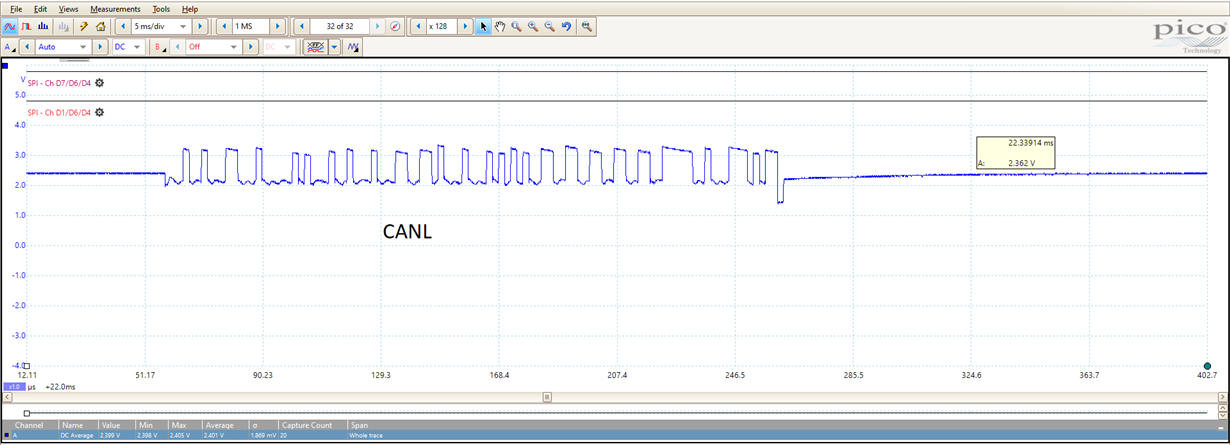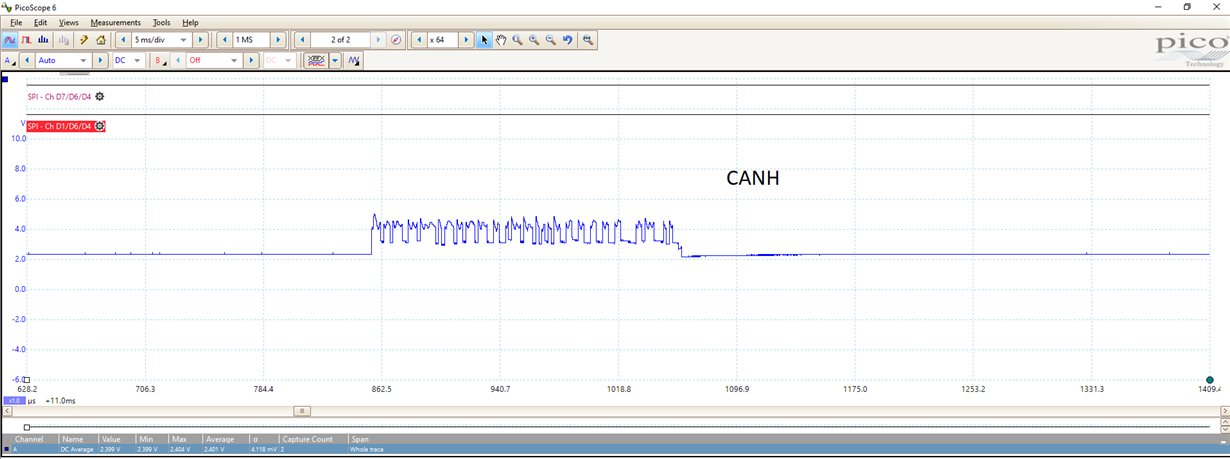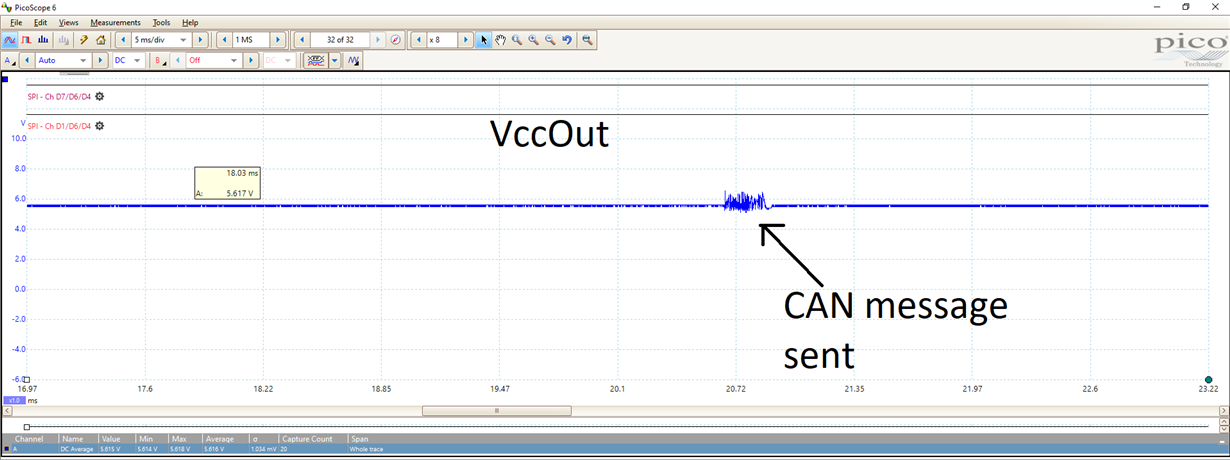The VCCout pin gives 5.5V when supplied with 15V supply.
SPI communcation is working fine.
The 0.5V offset in VCCout also appears in CAN bus while message is being sent. The CANH and CANL pins remain near 2.5V and as soon as transmit messages command is sent a 0.5V offset gets introduced and refence voltage becomes 3V while sending CAN message. After transmitting message it returns back to 2.5V. Due to this some CAN messages sent by TCAN4550 are not received by receiver.
Also TCAN is not able to receive some CAN messages.
I have made schematics according to TCAN4550 EVM




